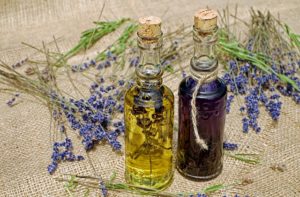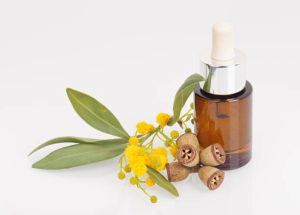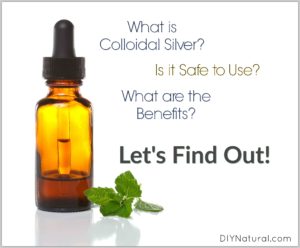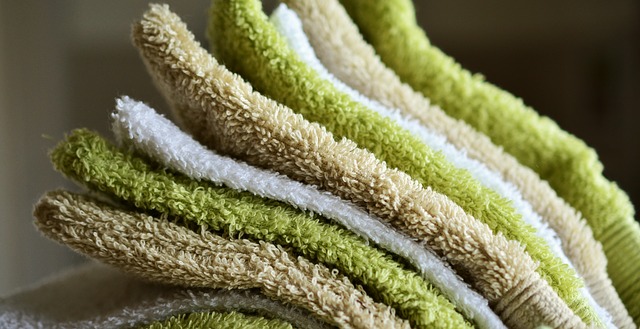If you’re like most people, you enjoy opening your dryer door and removing clothes, sheets and kitchen towels that have a fresh, clean scent. If you’re like most people, you may also find yourself reaching for the store-bought, chemically concocted fabric softeners, room sprays and candles promising to cover up or mask unpleasant household smells, even if you’re not sure what they’re made of. Whether or not you’re bothered by the strong scents you encounter when you walk into the cleaning aisle at your local supermarket, those heady fragrances are loaded with toxins that are anything but good for you or anybody else.
In fact, more than 600 volatile organic compounds (VOCs — read: carcinogenic) substances waft their way through your home from the laundry products you use, including detergents, liquid fabric softeners and dryer sheets. If you’re looking for a product that can cut through odors, but you’d rather use something that’s all natural and free of artificial fragrances and dyes, here’s some good news: You can make your own, and all you need are four ingredients.
Recipe for an All Natural, Homemade Odor Eliminator
This recipe for a completely natural fabric and room freshener spray rivals anything you can buy at your local supermarket or dollar store, but without the toxic ingredients. In fact, other than water, the other three ingredients contain powerful and unique healing properties. Here’s all you need:
- 1 cup (8 ounces) of water
- 6 droppers of colloidal silver (about 1/2 tablespoon)
- 40 drops of lavender oil (about 1/2 teaspoon)
- 40 drops of eucalyptus oil (about 1/2 teaspoon)
Mix the ingredients in a glass measuring cup, then pour into a spray bottle and shake gently before each use. It’s that easy. (Note: It’s always a good idea to test a small corner of any fabric before applying essential oils.) The ingredients in this spray are derived from plants and minerals, quite unlike those chemical-laced offerings designed to make your laundry, kitchen, furniture, bathrooms and other areas of your household smell nice. Eucalyptus and lavender both contain a number of purifying compounds, and colloidal silver has powerful antibacterial, antifungal and antiviral properties.
The Attributes of Lavender Oil
 Lavender (Lavandula angustifolia) oil has been used for millennia, as far back as the ancient Greeks, Romans and Persians. It was often used it in bathwater for both purification and fragrance, hence, the word “lavender” which means “to wash” in Latin. Lavender is a natural disinfectant and deodorant that’s been used in the most primitive settings, even for mummification, and castle keepers sprinkled it liberally on rush floors to disinfect and deodorize.
Lavender (Lavandula angustifolia) oil has been used for millennia, as far back as the ancient Greeks, Romans and Persians. It was often used it in bathwater for both purification and fragrance, hence, the word “lavender” which means “to wash” in Latin. Lavender is a natural disinfectant and deodorant that’s been used in the most primitive settings, even for mummification, and castle keepers sprinkled it liberally on rush floors to disinfect and deodorize.
Today it’s a common ingredient in laundry soap, shower gels, candles and drawer sachets. Lavender oil is also an effective and soothing emollient to massage into your skin. Add it to an Epsom salt foot bath for sore, tired feet, and be aware that vaporized lavender oil is effective as a muscle relaxer. The light fragrance is also noted for helping relieve insomnia.
One reason lavender is effective for all these purposes and in healing is because of its volatile, organic compounds, explaining why it’s so soothing added to a hot compress to ease the pain of sprained muscles or tendons. With over 150 different components, pure lavender oil is chemically complex, with antifungal, antidepressant, antibacterial, antimicrobial, antiseptic and numerous other “anti” properties that do more than smell nice.
Eucalyptus Oil: Uses and Description
 The oil of Eucalyptus globulus has been shown in clinical studies to treat pain and inflammation associated with bronchitis, coughs, inflammation, infected sinuses and respiratory tract mucous membranes and asthma. As an antiseptic, the oil is effective used on wounds, burns and ulcers.
The oil of Eucalyptus globulus has been shown in clinical studies to treat pain and inflammation associated with bronchitis, coughs, inflammation, infected sinuses and respiratory tract mucous membranes and asthma. As an antiseptic, the oil is effective used on wounds, burns and ulcers.
Besides stimulating your immune system, the oil also has the ability to exert pain relief, energize and rejuvenate, and alleviate mental exhaustion. Somewhat similar in terms of fragrance to mint, eucalyptus is often used in mouthwashes, cough drops, ointments and cleaning products because the clean scent seems to penetrate your nasal passages, but in a good way. Beauty products containing eucalyptus oil also impart moisturizing benefits.
Colloidal Silver Effective Against Antibiotic-Resistant Pathogens
 Silver used against pathogens is, surprisingly, not a new thing. In fact, Hippocrates explained its abilities against pathogenic bacteria in around 400 B.C. Today, clinical studies have identified colloidal silver as strong enough to eradicate even antibiotic-resistant super pathogens. Interestingly, research shows that silver has the capacity to multiply the effectiveness of antibiotics as much as a thousand times.
Silver used against pathogens is, surprisingly, not a new thing. In fact, Hippocrates explained its abilities against pathogenic bacteria in around 400 B.C. Today, clinical studies have identified colloidal silver as strong enough to eradicate even antibiotic-resistant super pathogens. Interestingly, research shows that silver has the capacity to multiply the effectiveness of antibiotics as much as a thousand times.
Medical News Today reported that silver added to an antibiotic called vancomycin rendered it powerful enough to kill gram-positive bacteria such as staph and strep. It can also defeat gram-negative bacteria like those implicated in dangerous infections associated with hospitals, such as methicillin-resistant Staphylococcus aureus (MRSA) and severe acute respiratory syndrome (SARS), as well as bacteria that cause food poisoning. Another study revealed that a small amount of silver added to the same antibiotic obliterated a urinary tract infection caused by tetracycline-resistant E. coli. There’s also clinical evidence that silver is effective for faster wound healing and is a powerful immune booster. As an added boon, it has a long shelf life.
Over the last several decades, the use of silver as an antibacterial faded into the background as a seemingly old-fashioned remedy. But that was before super bugs came along. Today, colloidal silver’s effectiveness and versatility has proven itself once again as a dramatically effective mineral against illness and disease.
Toxic Ingredients in Cleaning, Laundry and Deodorizing Products
If you’re an avid label reader, you may be dismayed to find that many of the chemicals used to make air fresheners and other cleansing and laundry products may not even be listed. Toxin Detective observes:
“That’s because most companies keep fragrance ingredients a secret since they can claim that they are ‘confidential business information’ and trade secrets. This scent ingredient secrecy occurs wherever synthetic fragrances are found (perfumes, cosmetics, personal care products and cleaning products to name a few), and it is especially egregious when it comes to air fresheners because fragrance makes up most of the product.”
Some of these ingredients include phthalates, which are known hormone disruptors, and a nerve-deadening chemical that imparts the ability to stop smelling bad smells because it literally blocks your olfactory nerves. That’s how it so effectively “masks” other odors. In addition, the VOCs from your dryer and household venting system include acetaldehyde, acetone and ethanol. The Environmental Protection Agency (EPA) uses terms like “neurotoxic,” hazardous,” “linked to cancer,” “developmental toxin” and causing potential nervous system damage to describe these chemicals.
Further, these chemicals are almost instantly absorbed into your system when you inhale them, which may explain the woozy feeling you may experience when you walk down the candle, perfume or cleaning aisles referred to earlier, as they can affect your respiratory, neurological, endocrine and immune systems. One study notes that fragrance products can cross your blood brain barrier, and many of the thousands of chemical agents in fragrances have psychoactive properties, just like psychoactive drugs.
Incredibly, that’s what the majority of American households spray in their bathrooms, living rooms, bedrooms, cars, offices and worst of all, nurseries. Here’s a sobering study: Fragrance reactions in the workplace are now so common that detrimental effects are being compared to those of secondhand smoke.
The sad fact is, not only are companies not required to fully disclose all the ingredients they use, there’s really no way of knowing the percentages they’re using. You may already be aware that pet birds have been known to fly through the mist of a spritz of room freshener and drop dead on the spot. You may not be able to avoid coming into contact with harmful substances created in a misguided attempt to improve the not-so-pleasant smells you encounter from day to day. However, you can keep from adding to them by putting together your own homemade products that will make you healthier, rather than causing harm.
For the unabridged article, click here




Hi! I made this recipe and it’s great! I now bring a small spray bottle with me to use in hotels when I travel for work, and I use it at home all the time. Thanks for the great tip!
Jen, thanks SO much for the feedback. It is readers like you that keeps us enthused.